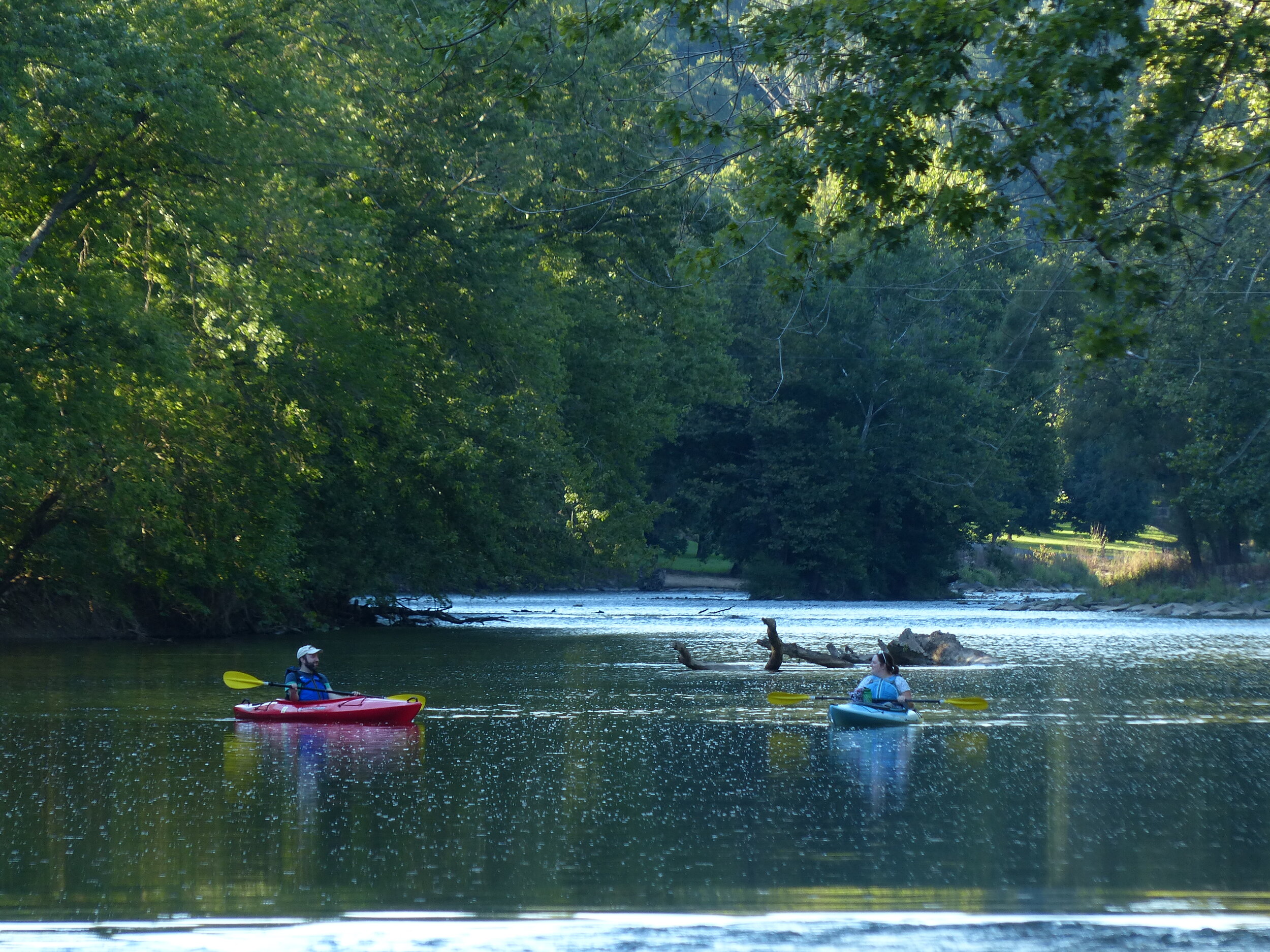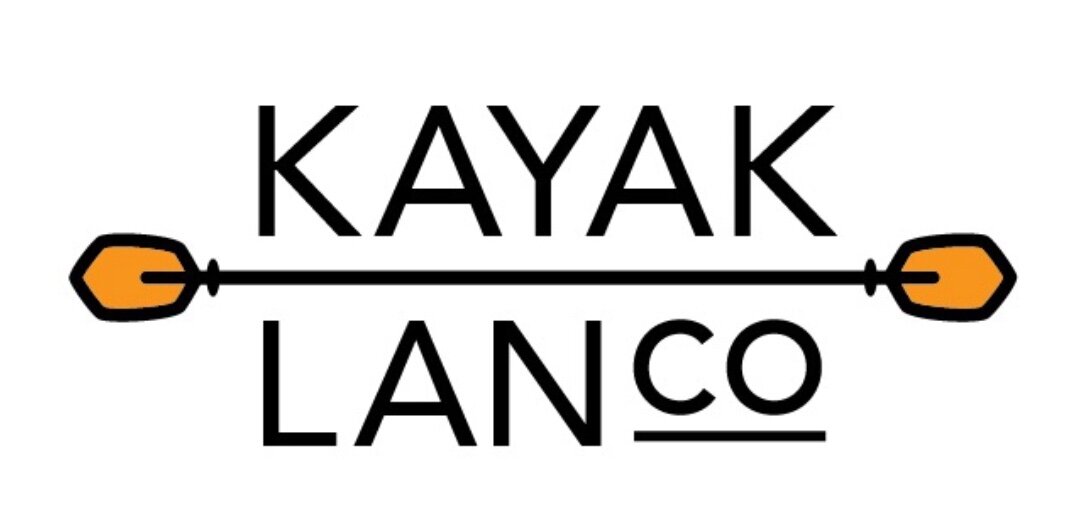
Conestoga River Watertrail
Kayaking the Conestoga River
by Teresa Maier
Welcome to your kayak rental adventure on the Conestoga River! This kayak adventure will take you 3.5 miles down the Conestoga River from Rock Hill to Safe Harbor. These days the river is largely peaceful and quiet. But look closely, because there’s a lot more here than you might expect.
Rock Hill
We start in Rock Hill. There doesn’t appear to be much here now, but this quiet community once bustled with a grist mill, hotel, blacksmith shop, about 20 dwellings and a post office.
Rock Hill Dam and Canal Lock
Just upstream from the kayak put-in are the remains of an eight-foot tall stone and concrete dam that was built around 1900 to produce electricity. It was removed in 1996 to give migrating American shad in the Susquehanna River access to historic spawning grounds in the Conestoga River. This was also the location of one of the Conestoga Navigation canal locks.
James R. Kilby
There is a small memorial plaque on the the remains of the dam. It remembers the day in 1989 that James R. Kilby died while helping to rescue two teenagers who were tossed from their raft as they rode the rain swollen river over the dam without PFDs or paddles. Kilby was posthumously awarded the Carnegie Medal for his act of heroism.
Rock Hill Bridge
Be sure to look up as you kayak under the Rock Hill Road bridge. This 256-foot long, steel bridge was built in 1923. Its intricate design includes lattice railings and v-lacing on the truss members. From the river, the open steel bridge deck frames the sky.
The Confluence of the Conestogas
Less than a mile downstream from Rock Hill is the confluence of the Conestoga River and the Little Conestoga Creek. When you come to the first building on the right hand side of the river, turn and look behind yourself to see the meeting of the waters. This is the last major tributary to enter the Conestoga.
Pickle Run Tunnel
Shortly after the confluence, on the left hand side of the river, the small tributary of Pickle Run joins the flow. A beautiful stone arch tunnel carries Pickle Run under a roadway just before it flows into the Conestoga.
Wildlife
As the river moves farther from the road, more wildlife can be seen. Bald eagles and red-tailed hawks often soar overhead. White-tailed deer linger by the riverbanks. Turtles bask in the sun and frogs fill the evening with their calls. When the river water is not carrying sediment, it is clear and sparkles in the sun and any number of fish can be seen, just looking down. There are countless tiny fish, as well as sunfish, catfish, carp, and smallmouth bass.
Belted Kingfisher
Stocky and large headed, Belted kingfishers are blue-gray above with a white belly, broad blue breast band, and a shaggy crest on their heads. They measure about 12 inches long (slightly larger than a robin) and sport a long, thick, dagger-like black bill. Kingfishers nest deep in the earthen banks of the river and are often seen perching on branches near the water, or hovering on rapidly beating wings, before plunging in to catch small fish and crayfish. They are often heard giving their long, strident, rattling call.
Herons
Stalking the shallows or perched in the trees, great blue herons are hard to miss. Tall and blueish gray, they measure 42-52 inches with a wingspan up to 6 feet. They have an S-shaped neck, long yellow bill and a wide dark stripe above their eyes. In flight they have very slow wingbeats, a tucked in neck, and legs trailing out behind. Herons will often bark or grunt when disturbed.
Conestoga River Park & Conestoga Navigation Company
This narrow park is quite popular with families for fishing, picnicking, and enjoying the fresh air. Not quite visible from the river is the remains of Lock 8 of the Conestoga Navigation Company, dating back to the 1820s. From Lancaster, the canal was used to transport lumber, coal, and grain bound for Baltimore, Philadelphia, and New York.
Safe Harbor
The quiet park and wooded hillsides of Safe Harbor give few clues to what used to be here. In the 1846 this place was selected to be the site of an iron works to manufacture railroad rails. Within 20 years, there was a blast furnace, rolling mill, foundry, drug store, post office, two general stores, two school houses, two churches, two hotels, five taverns, six beer halls, three liquor stores, an Odd Fellows Hall, and dozens of houses sprawling along both banks of the river and up the hillsides to support the town’s estimated population of 1,200.
This thriving community was doomed to a relatively short lifespan. In 1865 floodwaters damaged the canal beyond repair. By 1894, the iron works was closed for good. A match factory and machine shop lingered in its place. It was the Great Ice Flood of 1904 that finally destroyed the community. After an exceptionally cold winter, the spring thaw brought ice chunks from the Susquehanna downriver. The ice lodged in the landscape and blocked the mouth of the Conestoga, sending water and great heaps of ice as far upriver as Rock Hill and causing catastrophic damage. What was left of the once thriving community was pulled down for scrap, save only the iron masters mansion and the Odd Fellows Hall, both visible on the hillside. A century later, we find the river free flowing once again and the hillsides home to an abundance of wildlife.
